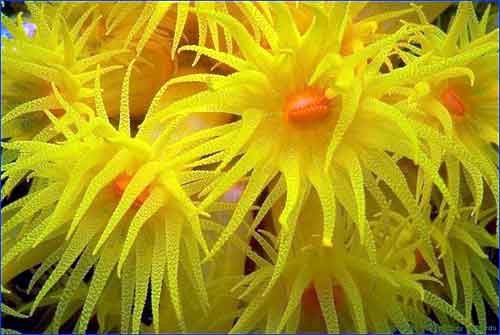Coral Polyp
Coral organisms, called polyps, can live on their own, but are primarily associated with the spectacularly diverse limestone communities, or reefs, they construct.Coral polyps are tiny, soft-bodied organisms related to sea anemones and jellyfish. At their base is a hard, protective limestone skeleton called a calicle, which forms the structure of coral reefs.
- Type: Invertebrate
- Diet: Carnivore
- Average life span in the wild: Polyp, 2 years to hundreds of years; colony, 5 years to several centuries
- Size: Polyp, 0.25 to 12 in (0.63 to 30.5 cm)
Coral polyps are actually translucent animals. Reefs get their wild hues from the billions of colorful zooxanthellae (ZOH-oh-ZAN-thell-ee) algae they host. When stressed by such things as temperature change or pollution, corals will evict their boarders, causing coral bleaching that can kill the colony if the stress is not mitigated. Corals live in tropical waters throughout the world, generally close to the surface where the sun's rays can reach the algae. While corals get most of their nutrients from the byproducts of the algae's photosynthesis, they also have barbed, venomous tentacles they can stick out, usually at night, to grab zooplankton and even small fish.
Source: National Geographic
